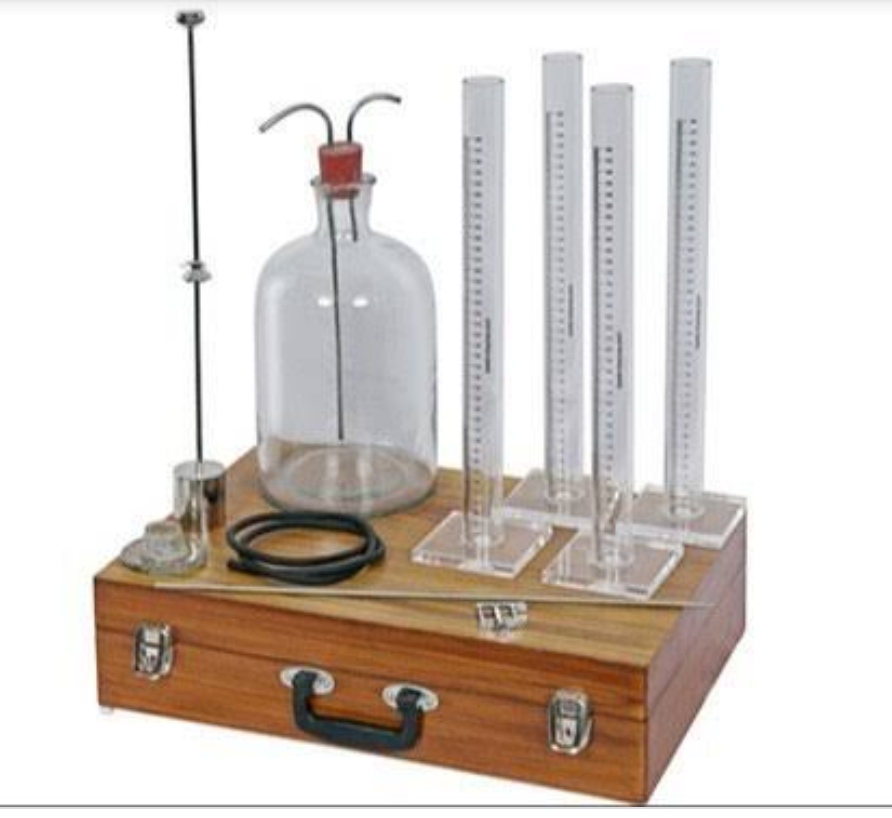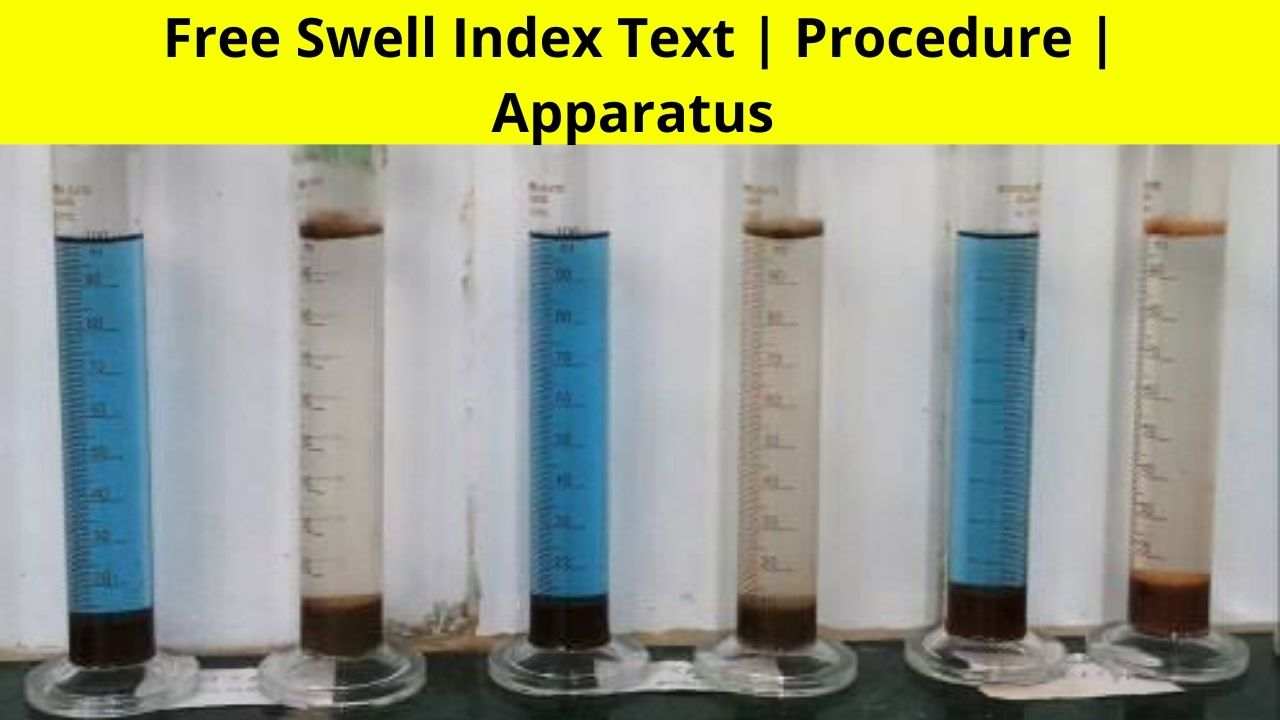

In this article, we explained how to determine free swell index of soil in laboratory, what is the practical uses of it, aim, apparatus, precautions, etc.
Table of Contents
To determine free swell index of expansive nature soil

Free swell is the increase in volume of soil, Without any external constraints on submergence in water. The possibility of damage to structures due to swelling of expansive clay need be identified by an investigation of those soil likely to possess undesirable expensive characteristics. This testing is provided to reflect the potential of the soil to swell under different simulated conditions. For the given clay the free swell index in percent can be calculated as follows:
Free swell index (%) = (Vd – Vk/ Vk) x 100
Where, Vd = The volume of soil specimen read from the graduated cylinder containing distilled water, ml
Vk = The volume of soil specimen read from the graduated cylinder containing kerosene, ml
Take two 10gm soil specimen of oven dry soil passing through 425 micron IS Sieve.
Pour each of the specimen in each of the two glass graduated cylinders of 100ml capacity.
Fill one cylinder with kerosene oil and the other with distilled water upto the 100ml mark. After removal of entrapped. Air (by gentle shaking or stirring with a glass rod), allow soils in both the cylinders to settle.
Allow sufficient time (not less than 24hrs) for the soil sample to attain equilibrium state of volume without any further change in the volume of the soils.
On completion of swelling, read out the final volume of soils in each of the cylinders.
Do the necessary calculation and find out the free swell index.
To determine the evaporation losses, both the cylinders should be e bless away from any source of heat and wind.